
+91 8095511877

+91 8095511877
Your rotator cuff is a group of four muscles and tendons that keep your shoulder joint stable while you move your arm around. It helps you lift your hand above your head as well as to rotate your arms.
An injury to it can make life hard for you. Even simple tasks like combing your hair or reaching out for something in a top-shelf can give you shoulder pain. If the injury is very severe, you will need a rotator cuff repair surgery to set it right.
The most common injury affecting the rotator cuff is a ‘tear’. In this, the tendons that attach the muscles to the shoulder joint rips from the bone.
A rotator cuff tear limits your ability to lift your arms or to carry weights. Those who perform repeated overhead movements of the arm are at a higher risk of damage.
In a rotator cuff repair surgery, the surgeon repairs the torn cuff and reattaches it to the shoulder bone. You can have open surgery or arthroscopic surgery, which needs only small incisions.
The rotator cuff helps you to lift your arms as well to rotate it. If you have a tear in it, you can have the following symptoms.
Pain while moving your arms- At first, the pain will be in your shoulders. As the injury worsens, you will start feeling pain in the outsides of your upper arm.
Movements of your arm, especially lifting it, will slowly begin to hurt. Everyday activities like combing, shaving, dressing up, etc. will become a problem due to the pain.
Later on, you will start having pain in the arms and shoulders even a rest.
As the condition progresses, the pain in the shoulders will start disturbing your sleep.
You may have a swelling of the shoulder joint
A feeling of weakness in the arm- It will be difficult for you to lift even small weights
Hearing sounds while move the shoulder joint- You can hear popping, crackling, or rubbing sounds while you move the arms
Overdoing some movements of the arms like lifting or rotating is the most common cause. If your job needs repeated overhead motions, it causes a lot of strain in the rotator cuff.
Sports, like tennis, cricket, baseball, etc., where you lift your hand above your head regularly, can also cause injury. A fall on your shoulder can also damage the tendons of the cuff.
If you lift weights regularly, it is easy for you to have a tendon injury. All these cause a lot of wear and tear to the rotator cuff.
As the wear and tear increases, the tendons slowly start cracking up. If you do not take proper treatment at this stage, the tendon comes off from the bone ultimately.
Sudden or abrupt movements can lead to a ‘tear’ if you have an already weak tendon. Stretching your arms too much, throwing, lifting weights, etc. are the common ones.
There are some common risk factors for a rotator cuff tear. They include
If you are a right-hander, your right rotator cuff is at risk. Left-handers are more likely to injure their left rotator cuffs.
There are two main types of rotator cuff tears. They are
If you have only a partial tear, rest, physical therapy, and restriction of movements can help you get better. A complete tear will need surgery for repair.
Also, your tear can be acute or degenerative. An acute tear happens all of a sudden. Traumatic injuries to the shoulder are the most common reason. Among these, falling on your shoulder with your hands stretched out is a major cause.
In a degenerative tear, the wear and tear of the tendon due to overuse makes it weak. The crack progresses from partial to complete, and finally, the tendon snaps.
Minor injuries to the rotator cuff usually heal with rest, medications, and physical therapy. But if you have a large tear, you will need surgery to repair it. You will have surgery if
You can have three types of surgery for rotator cuff repair.
1. Open surgery- You will have a long incision in your deltoid muscle to expose the shoulder joint. The surgeon will then repair the torn tendon by attaching it to the bone with the help of anchors.
2.Arthroscopic surgery- The operation needs only two or three small incisions around your shoulder joint. Through one of the incisions, your surgeon will insert an arthroscope to view the joint.
The arthroscope has a camera that beams images to a large monitor for the surgeon to see. The surgeon will then insert the instruments in the remaining incisions used for washing the joint and to remove surgical debris. Using anchors the torn tendon are repaired .
3.Mini open-repair surgery – It is a combination of open and arthroscopic surgery, offering the advantages of both. The surgeon will use an arthroscope to clean the bone surface and make a small incision in the shoulder for repairing the tendon.
Before the surgery
Your surgeon will take X-rays and MRI scans of the shoulder to assess the extent of damage to the tendon. Before the surgery, you will have to take a few precautions to ensure a safe operation with faster recovery time. These include
You will have to be in the hospital the day before surgery.
During surgery
You will have general anesthesia, which means you will sleep through the operation. Once you are asleep, the surgeon will start by making an incision in the shoulder. The length of the incision will depend on the type of surgery that you will have.
The next step is to reattach the torn tendons along with the muscles to the shoulder bone. The surgeon will use special devices called anchors to attach the tendons. Once the repair is complete, the surgeon will close the incision with the help of sutures and staples.
After surgery
When the surgery is over, the surgeon will move you to the observation room. You will wake up from your sleep an hour or two after surgery. Then you can go back to your hospital room. The first thing you will notice will usually be the tight bandage over your shoulder. You will feel very tired, as well.
While in the hospital
The first thing you will notice will usually be the tight bandage and a sling over your shoulder. It is to prevent you from moving your arms and shoulders. You will also not sleep on the operated joint.
Once the effects of the anesthetic get over, it is natural for you to feel pain in the shoulder. Painkillers will help to ease it.
You will have to walk around in your room to promote better circulation in your body. It helps to fasten your wound healing and recovery.
At home
You will be back home after a day or two. Before coming home, your surgeon will give instructions about how to care for your shoulder.
Complete recovery will take about six to eight months. You will have the sling on the shoulders for a week or two, depending on your progress. While removing the sling, your surgeon will advise you about how to use your shoulder and lift your arm.
You will follow these instructions for a speedy and safe recovery
A rotator cuff repair is safe surgery, but there are some minor risks and complications as well. The risks include
Complications can be
Outlook
Rotator cuff repair surgery usually gives excellent results, and you will be no exception. The only thing that you need to do is to follow the instructions of the surgeon regarding shoulder care. You also will have to do the shoulder exercises to improve the mobility of the joint.
Most of the complications occur due to improper aftercare and a lack of shoulder exercises. By sticking on the plan of recovery, your shoulder will be back to normal in a few months of surgery.


This article has been reviewed for medical correctness and relevance by
Dr Jagadeesh PC
Dr.P.C.Jagadeesh is a consultant Orthopaedic Surgeon with special interests in Arthroscopy and Sports Medicine. He is highly experienced in Ligament Reconstruction in Knee, Rotator Cuff. He is also adept at Complex Joint Trauma, Knee Replacement, Shoulder Replacement and Elbow Replacement. Dr. Jagadeesh has performed over 5000 Knee Arthroscopic Surgeries and 1200 Shoulder surgeries.

Warda Mohamed
Qatar
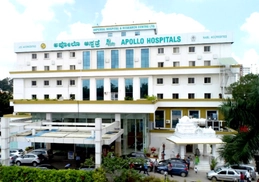
Apollo Bangalore

Apollo Chennai
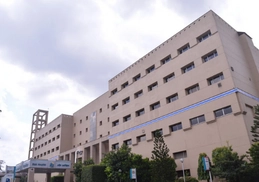
Apollo Gleneagles
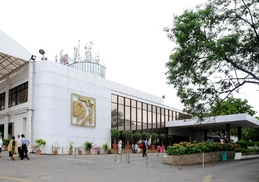
Apollo Health City
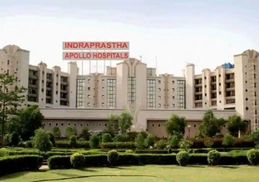
Apollo Indraprastha
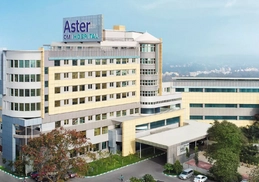
Aster CMI
Frequently Asked Questions
How long does it take to recover from rotator cuff surgery?
When can I lift my arm after rotator cuff surgery?
What should I avoid after rotator cuff surgery?